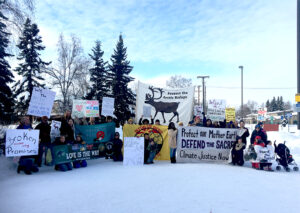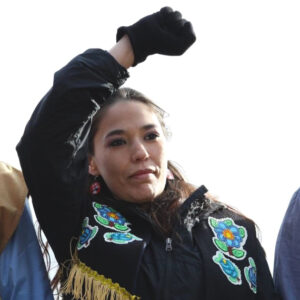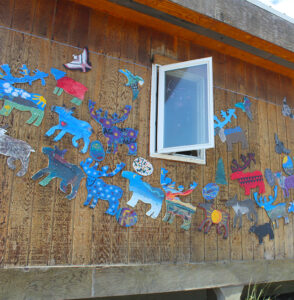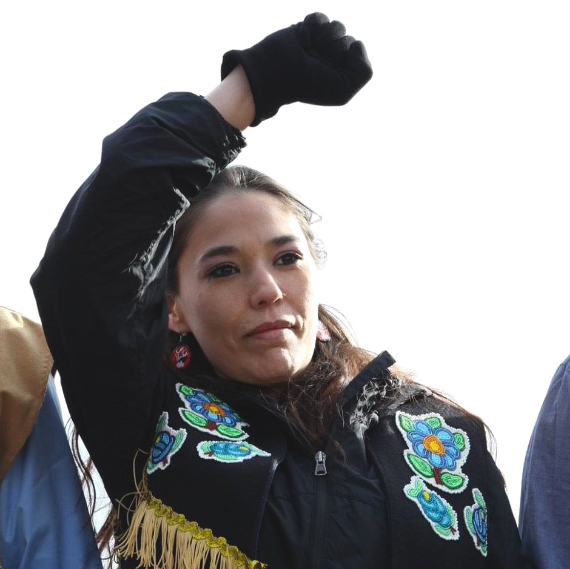
Interior disregards human rights in rush to lease Refuge
Officials from the Interior Department set up meetings in Kaktovik, Utgiagvik, Fairbanks and Anchorage to advance their agenda of leasing the Arctic Refuge as fast as they can.
The Interior deputy secretary spoke at the Alaska Support Industry Alliance meeting on March 8 in Anchorage, but he didn’t meet with the Gwich’in, the people who call the Arctic Refuge “Iizhik Gwats’an Gwandaii Goodlit” or “the place where life begins.”
When federal officials visited Alaska this month, they made it clear through their actions that they will disregard the voices and human rights of the Gwich’in people in favor of industry and politicians.
The coastal plain is our identity
Bernadette Demientieff, executive director of the Gwich’in Steering Committee, joined an Arctic Refuge rally in Fairbanks last week to protest the exclusion of her people from DOI meetings, and in fighting to protect the coastal plain of the Arctic Refuge,
“Protecting the coastal plain is protecting our identity, our human rights, and our culture,” she said at the rally and in a press release. “The Interior and the Alaska delegation have ignored our human rights in favor of the oil and gas industry,” she said. “They insist on plunging recklessly into drilling the coastal plain of the Arctic Refuge – a place we know as the sacred lands that support the Porcupine Caribou Herd and my people.”
Congress pushed the Refuge under the bus
Congress passed a budget last December that would allow oil and gas development in the Arctic Refuge, despite decades of bipartisan support for protecting America’s iconic Arctic region.
President Dwight Eisenhower first set aside the Arctic Refuge area in 1960 “for the purpose of preserving unique wildlife, wilderness and recreational values.” Congress expanded the range and renamed it the Arctic National Wildlife Refuge in 1980. The purpose of the Refuge has always been to protect wildlife and preserve a cultural way of life that has persisted for millennia.
The language of the drill bill passed by Congress —and conveniently tucked away in a budget process that lacked adequate debate or transparency—allows the fossil fuel industry to turn the coastal plain of the Arctic Refuge into another Prudhoe Bay.
Broken promises
During those Congressional hearings, Senator Lisa Murkowski made promises to uphold environmental protections and tribal input. The Interior’s visit this month proved that those promises would be broken, said Demientieff, and that neither federal nor state leaders intend to listen to or consider the Gwich’in people.
“Any threat to the coastal plain is a threat to the Gwich’in,” she said.
The traditional lands of the Gwich’in extend across Northern Alaska and Western Canada, but they do not go to the coastal plain. They consider the coastal plain the sacred grounds for the caribou to calve and feed.
Their culture and communities rely on the caribou and have for thousands of years.
The Gwich’in will fight every step of the way
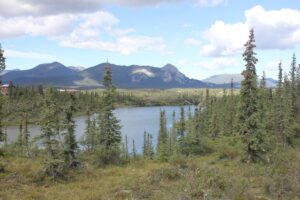
The Gwich’in people live in remote communities throughout Alaska and Canada, including Arctic Village, Alaska.
The Interior visit to Alaska set the stage for pushing through an administrative process for oil and gas leasing in the Refuge. Soon, the Interior will release a notice in the Federal Register that will kick off a scoping period and attempt to fast track a draft environmental impact statement.
“Everything is happening so fast now,” said Demientieff, “and that’s what the people in power want. They intend to ramrod through oil and gas leasing in the Refuge even when it means shortcutting science, public process, traditional knowledge and a real evaluation of what is at stake. The Interior should know that we will not be quiet and we will not be ignored. We will fight to protect the Arctic Refuge every step of the way.”
The Gwich’in Steering Committee was founded in 1988 by Gwich’in elders to protect the Coastal Plain of the Arctic National Wildlife Refuge from oil and gas activities.
Trustees represents the steering committee and has worked to protect the Arctic Refuge for decades.



